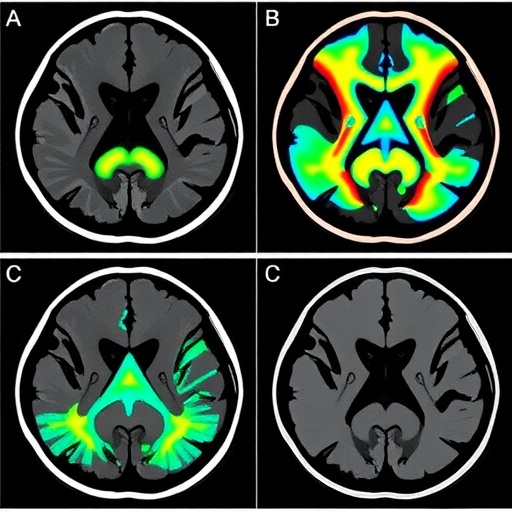In a groundbreaking advancement poised to transform prostate cancer diagnostics, new research suggests that an abbreviated biparametric magnetic resonance imaging (MRI) protocol could soon replace the current multiparametric MRI standard in clinical practice. This abbreviated imaging technique, requiring only essential sequences for accurate cancer detection, promises to drastically reduce scan times while maintaining diagnostic integrity. As a result, this innovation holds the potential to streamline prostate cancer workups for millions of men worldwide, accelerating diagnosis and improving healthcare efficiency on a global scale.
Prostate cancer remains one of the most commonly diagnosed malignancies in men, and timely, accurate detection is critical for effective treatment planning and improved patient outcomes. Traditionally, multiparametric MRI, which combines several imaging sequences including T2-weighted imaging, diffusion-weighted imaging, and dynamic contrast enhancement, has been considered the gold standard for prostate cancer detection and characterization. While multiparametric MRI offers detailed anatomical and functional data, it is time-intensive, costly, and resource-heavy, often limiting widespread accessibility, particularly in regions with constrained healthcare infrastructure.
The novel biparametric MRI approach eliminates the need for dynamic contrast-enhanced imaging, retaining only T2-weighted imaging and diffusion-weighted imaging, sequences that provide sufficient contrast and functional assessment of prostate tissue. This streamlined scan paradigm not only reduces overall imaging time but also circumvents the use of intravenous contrast agents, mitigating patient risks associated with contrast administration and lowering procedural complexity. Such advancements are expected to enhance patient comfort and reduce barriers to prostate MRI utilization.
Researchers spearheading this investigation have demonstrated that when image quality is sufficient, biparametric MRI can detect clinically significant prostate cancers with accuracy comparable to that of conventional multiparametric MRI. This finding is significant as it challenges long-held assumptions about the necessity of contrast-enhanced sequences for effective prostate cancer diagnosis, opening the door to a new era of efficient, patient-friendly imaging protocols.
One of the most compelling arguments for adopting biparametric MRI lies in its potential to transform global healthcare economics. With an estimated 4 million prostate MRI scans performed annually worldwide, the reduction of scan time per patient could exponentially increase scanner throughput. Such improvements would not only reduce the cost per examination but would also address bottlenecks in imaging services, enhancing access particularly in underserviced areas.
Implementing this abbreviated MRI protocol could also alleviate the growing demand burden on radiology departments, freeing resources to focus on complex cases or other imaging needs. This efficiency gain could be especially impactful in public health systems grappling with limited equipment and trained personnel, enabling more equitable distribution of imaging services.
Beyond simple time savings, the avoidance of gadolinium-based contrast agents aligns with growing concerns over gadolinium deposition in the brain and other tissues. While clinical consequences remain under investigation, reducing patient exposure to contrast agents is widely acknowledged as a favorable safety advancement, particularly for patients requiring repeated imaging exams.
The study’s corresponding author, Dr. Veeru Kasivisvanathan from University College London, emphasized that biparametric MRI’s adoption as a new standard of care hinges on maintaining adequate image quality. Factors such as scanner technology, imaging protocols, and radiologist expertise play critical roles in ensuring reliable diagnostic accuracy. The tissue characterization afforded by the key sequences facilitates precise lesion detection and risk stratification, which are paramount to guiding biopsy decisions or surveillance strategies.
Moreover, the abbreviated MRI approach dovetails with evolving biopsy techniques. When combined with targeted biopsy, biparametric MRI can enhance the diagnostic yield, potentially reducing the number of unnecessary biopsies and associated morbidities. Such synergy between imaging and intervention underscores a holistic shift towards more personalized prostate cancer management.
The researchers have made their study findings available through a prominent medical journal, further encouraging practitioners and policymakers to consider protocol revisions. This evidence-based push towards abbreviated imaging reflects a broader trend in medical imaging towards maximizing diagnostic information while minimizing patient burden and healthcare resource utilization.
If widely embraced, the new biparametric MRI paradigm could revolutionize the diagnostic pathway for men with suspected prostate cancer, leading to earlier detection, quicker treatment initiation, and better overall prognoses. This shift is also anticipated to invigorate healthcare systems by relieving financial and operational pressures, ultimately benefiting a vast patient population on an international scale.
In conclusion, the research heralds a pivotal moment in prostate cancer imaging. By validating a shorter, contrast-free MRI protocol that does not compromise diagnostic efficacy, it challenges existing conventions and paves the way for more accessible, cost-effective, and patient-centric care. The ongoing dialogue within the urological and radiological communities will be critical to refining and integrating this innovation, marking an exciting step forward in cancer diagnostics.
Subject of Research: Prostate cancer diagnosis using abbreviated biparametric magnetic resonance imaging (MRI)
Article Title: Not provided
News Publication Date: Not provided
Web References: Not provided
References: DOI: 10.1001/jama.2025.13722
Keywords: Prostate cancer, Magnetic resonance imaging, Medical diagnosis, Medical tests
Tags: biparametric MRI for prostate canceressential MRI sequences for cancer detectionhealthcare efficiency in cancer diagnosisimproving prostate cancer detection methodsinnovative imaging protocols in oncologyMRI scan time reductionmultiparametric MRI comparisonprostate cancer diagnostic techniquesprostate cancer imaging advancementsreducing costs in prostate cancer diagnosticsstreamlined prostate cancer workupsT2-weighted and diffusion-weighted imaging





